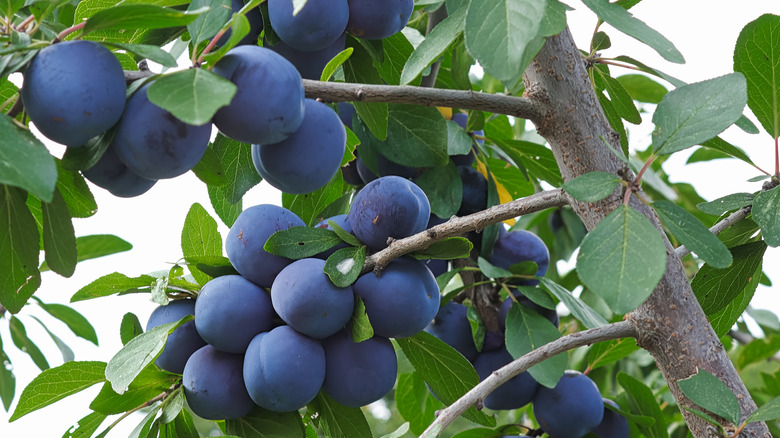The End-Of-Summer Plums Ina Garten Uses For Tarts
The end of summer is an ideal time to whip up sweet baked treats with in-season ingredients, and fresh plums certainly fit that bill, with a harvest season that spans from June to August. And for celebrity chef Ina Garten, there is one particular type of plum she prefers over all others. In a video on the Food Network's Youtube channel explaining the process of baking her Italian Plum Tart, Garten says that she prefers Italian prune plums.
Fresh, Italian prune plums aren't typically as flavorful as the plums we get in U.S. grocery stores, but when baked, their sweet, mellow flavor comes to life. It's also easy to separate prune plums' flesh from their pits, since they're freestone fruits, while typical plums cling to their pits more tightly. And according to Garten, there's another reason to use them in a tart: Italian prune plums are a little drier and excrete less juice, so they hold up better in desserts and other baked goods. However, Garten says you can use regular plums for this tart if you'd like as long as they're firm and not overly juicy.
How Garten uses Italian prune plums
To absorb the Italian prune plums' juices even more, Garten douses them with two tablespoons of tapioca. "It's a root and it's used to thicken things classically in pies," she explains. Then, to jazz up the tart's filling, she adds two tablespoons of crème de cassis liqueur, which enhances the fruits' flavor. After stirring in sugar, Garten lets the whole mixture sit for 15 minutes so the flavors can meld together and the tapioca can draw out the plums' juices. Although you could make this tart with peaches or pears, according to Garten, nothing tops ripe, in-season Italian prune plums.
So where can you get your hands on these baking fruits? They're typically only in season for a few weeks in the late summer, so they can be easy to miss. You may be able to find them in farmer's markets, specialty stores, and potentially some supermarkets — they're native to Italy and a staple in Germany, but they can get a little tricky to track down in the U.S. You may have more luck getting them from farm websites online — and if you do, be sure to throw them in a delicious summer tart à la Garten.

